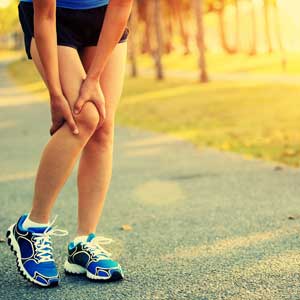Running Injuries, by Zara Bowler
One of the reasons I love being a Physiotherapist is the great satisfaction I get from treating a patient with an injury, and seeing them get back to the hobby or sport they love. There is nothing worse than an injured runner ..…. who is just dying to get back out on the road!
1. What are the most common Running Injuries?
In runners we generally see more tendon injuries. This is because running is not a very variable exercise, as it consists mostly of constant forward loading. This is more likely to cause overloading of the passive tissues (tendons) rather than injury to the active tissues (muscles). Stress fractures are also sometimes seen.
2. What are the main causes of Injury in runners?
Runners tend to sustain injuries after a sudden increase in mileage or gradient, or a sudden change in footwear ie. high-profile to a low-profile shoe. After a break from running due to holiday or illness, it is important that runners build gradually back into their running schedule. It is unlikely that they will be able to pick up from where they left off before the break. We also need to remember that over loading is not just physical, and that Mental stress and life’s demands can also affect training and lead to injury. Muscle imbalances and poor bio-mechanics can also lead to injury.
3. If I get injured will rest help?
Resting from the aggravating factor (which is likely to be running!) is often necessary. However, it is also important to keep active for mental and physical well-being. If you can’t run, you could consider lower impact options such as walking, swimming or cycling. This will maintain muscle strength and cardio vascular fitness, while allowing you to rehabilitate your injury. Your Physiotherapist will also be able to give you a specific programme of exercise to keep you busy and help you get back to running as soon as possible.
4. What can I do to prevent Running Injuries?
Prevention is key, and after treating a running injury I will always discuss preventing re-occurrence. Avoiding sudden changes in load is very important, as well as wearing comfortable supportive footwear. Maintaining good joint mobility, muscle strength, flexibility, and good balance and stability is also vital. Runners need isolated, functional and dynamic training to support their running. A Physiotherapist can advise and educate on this, and it can be done through interval training, weight training, strength and conditioning, Pilates and Yoga. Runners need to make their muscles do more to help reduce load through the tendons
5. When should i see a Chartered Physiotherapist?
If you have sustained an injury and are looking to get back to running as soon as possible, I would recommended assessment and treatment by a Chartered Physiotherapist as soon as you can. If the injury goes untreated for a while, secondary issues may arise which could increase the problem. Getting your injury seen to quickly, is likely to result in a lesser need for ongoing treatment and a speedy return to running.
6. What can a Chartered Physiotherapist do for me?
When treating a running Injury I will always take a detailed history of the issue, as this will allow me to use my clinical reasoning to reach a working diagnosis. It will also allow me to ascertain the irritability and severity of the problem. I will usually undertake a biomechanical assessment of the runner as well. I may assess the upper limb, spine and lower limb, looking at posture, movement, strength and flexibility. This will allow me to think about the injury and consider the possible pre-disposing factors which may have led to this injury.
Then using clinical reasoning and evidence-based practice, I will create a specific treatment plan for that runner which may include modalities such as advice and education, exercise, manual therapy, taping, dry needling, acupuncture, footwear advice, and orthotics to name but a few. I will set short term and long-term goals with my patient, which usually involves steps to getting them back to running at the speed and distance they desire.

